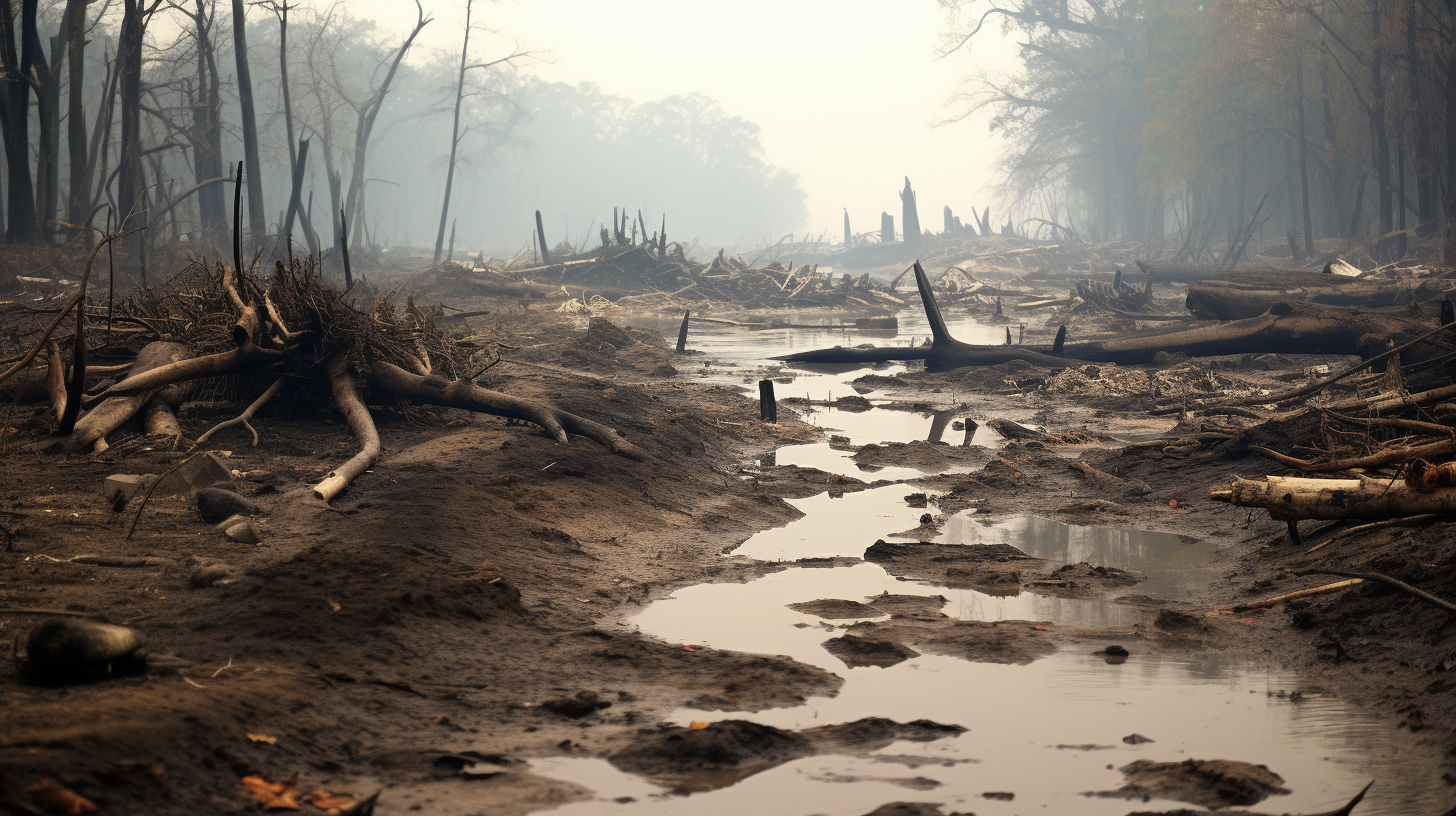In a future not far removed from our doorstep, where the echoes of running water should fill the air, there is an unsettling hush. Our rivers, the very sinews of our planet’s terrestrial body, once brimming with life and the orchestration of ecosystems, stand peculiarly still. ‘Silent Streams, Barren Dreams’ charts the morbid tapestry of our foregone rivers, the spectral arteries of a world that thrived on their pulsing vitality.
Mankind’s relentless stride towards an ill-defined progress has turned the once vibrant waterways into parched channels, where the babbling brooks and roaring rivers have given way to the cracking of dried mud and the whispered remembrance of water. Through the lens of our dystopian present, this article attempts to unravel the complex narrative of our water’s demise – tracing the vanishing droplets to a confluence of neglect and disaster.
The Cerulean Delta, once a burgeoning wetland, its channels so intertwined that the sun struggled to peer into its depths, is now a labyrinthine scar in the parched earth. Here, the relentless sun uncovers relics formerly held in the soft embrace of the streams: fish bones, the shattered shells of clams, and rusted tokens of human disregard. We are the keepers of a museum of death where life should perpetually exhibit its resilience.
It’s not without a pang of irony, one understands, that the delta’s demise also beckons the exodus of its children. Birds, once painting the skies with myriad colors and songs, have all but disappeared. The ‘Silent Threnody’ of the delta’s winged kin reverberates louder now in their absence than the cacophony of life ever did in their presence.
Then, consider the Rhapsodic River—a symphony of ecological harmony turned dissonant. Toxins and upstream interventions have dismembered it, leading to ecosystems once linked in a complex web of interdependencies, now striving to survive in isolation. Habitat fragmentation has severed the silent chords once played by innumerable species, rendering these ecosystems barren sonnets of a dream of fecundity.
Inhuman expanse is the Desiccated Basin, spanning miles of what used to be a network of life-sustaining tributaries. Today, its expansive and dusty terrain is interrupted only by the occasional oil derrick, still pumping the blood of the Earth as if to mock the land’s now ironic thirst. The basin’s groundwater, once the hidden treasure of civilizations, has been siphoned to oblivion—to serve the last gulp of an insatiable economy.
But who bears witness to these changes? The myriad of tales that come to light through scientific expeditions and the anguished voices of those few indigenous people clinging to the brink of their ancestral homes, weave a tableau of vivid despair. Not content with sheer survival, they share a collective memory, hoping that their stories will irrigate the seeds of change—though this seems a forlorn exercise in futility in our present age.
In the chronicling of these forsaken rivers, one might ponder the tragedy of our human narrative: a species possessing the genius to sculpt their environment, but lacking the wisdom to nurture it. Through tales of the Ravaged Runnels and the Entombed Estuaries, we glimpse the future of our own creation—unquiet graves for the myriad species we’ve shepherded to extinction.
As we map these silent streams and their barren dreams, we do not merely archive the world’s slow capitulation to human-triggered calamity. We pen a bleak prophecy—in water’s absence, a reveal of humanity’s profound disconnection from the cyclical serenade of nature.
How does one herald the rain when clouds fear to convene above poisoned skies? The chemistry of our atmosphere, the alchemy that churned out rain to feed the rivers has been bastardized. Acid rain, heavy with the metals of industry, falls indiscriminately—not to replenish, but to ravage.
The quietus of our rivers is not a closed chapter; it is a precursor to something far more dire. For in the dried riverbeds and through the cracked-earth corridors of these barren streams, one finds a mirror—a reflection of our potentiality for upheaval and renewal, should we awake from our self-wrought nightmare.
Yet, this elegy for our water bodies, while exhaustive, is not exhaustive. We confront the silence so it can be filled with the resounding determination to alter this decrepit course. Tales of the ‘Silent Streams, Barren Dreams’ of tomorrow breathe relevance into our present actions, hoping to stir the winds of change, to once again churn the clouds, urging them to weep life-affirming tears over the landscape.
But let us not self-deceive with the optimism of yesteryears. It is within the cold embrace of our stark reality that we must find a semblance of salvation, not to save the dystopian world we depict, but to avert its complete realization in our own.
